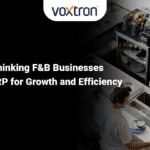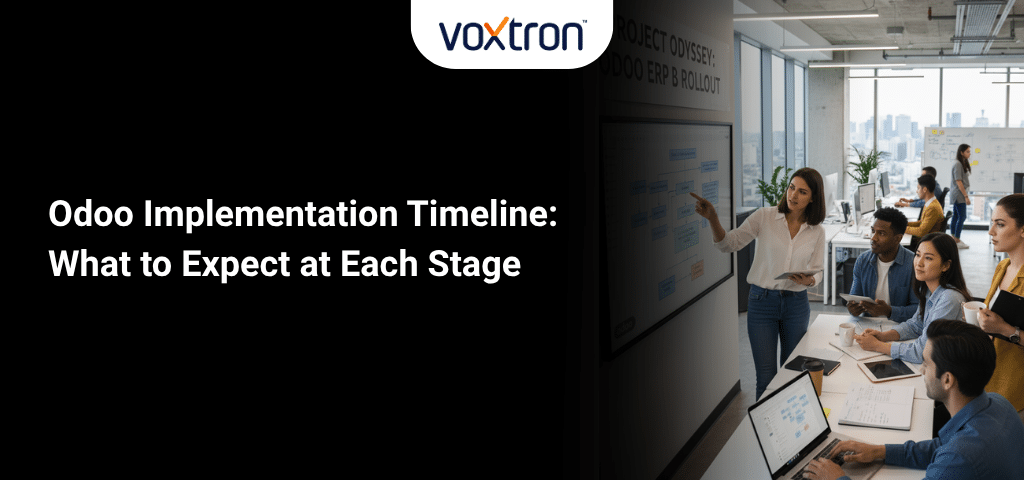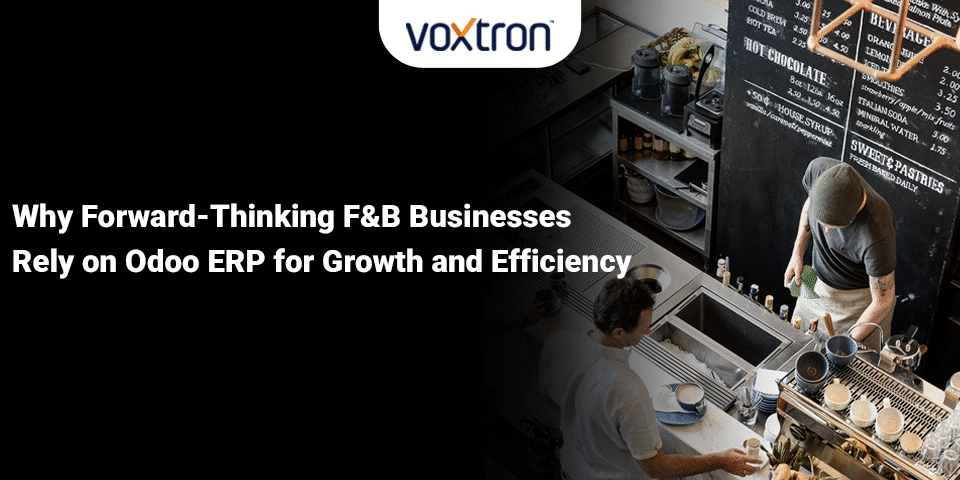
Why Forward-Thinking F&B Businesses Rely on Odoo ERP for Growth and Efficiency
November 19, 2025The Odoo Implementation Timeline: What to Expect?
Implementing Odoo ERP is a transformative step for small and medium enterprises aiming to streamline workflows and centralize data. However, successful implementation depends on well-managed expectations, stakeholder alignment, and realistic planning.
To understand this better, let us explore what SMEs can expect during an Odoo implementation and how the process evolves to ensure sustainable success.
Why Odoo for SMEs?
Odoo’s modular, cost-effective architecture is designed with growing businesses in mind. Unlike traditional ERP platforms that often demand heavy upfront investments, Odoo allows SMEs to digitize operations in manageable phases. Hence, businesses can start small with Odoo and expand later based on their needs.
Another major advantage is Odoo’s open-source flexibility. It supports both standard and highly customized deployments, integrates easily with external tools, and keeps businesses agile as markets evolve. Thus, Odoo offers a scalable path to modernization without disrupting existing business operations.
Furthermore, every Odoo module, from Sales and CRM to Accounting, HR, and Inventory, integrates effortlessly in the ERP. This ensures data consistency and real-time visibility across the organization.
Stages of a Successful Odoo Implementation
Successful Odoo adoption requires a structured project lifecycle as follows:
1. Needs Analysis
During needs analysis, the team performs an assessment of current processes, identifies business gaps, and defines user requirements in a Business Requirement Document (BRD). Engaging department heads and future users during this stage helps secure buy-in and minimize revision cycles.
2. Partner Selection
Choosing the right Odoo partner is one of the most crucial decisions in the implementation journey.
When evaluating potential partners, SMEs should look for the following:
- Odoo Certification and Experience: Certified partners bring proven methodologies and access to the latest Odoo updates, reducing risks associated with outdated practices.
- Industry-Specific Expertise: Partners with prior experience in your business domain can map processes more effectively and suggest best-fit configurations instead of generic setups.
- Strong Technical and Functional Team: A reliable partner will have both technical developers and functional consultants who understand business workflows.
- Transparent Communication and Project Management: Regular progress updates, milestone tracking, and clear escalation procedures help maintain accountability throughout the project.
- Customization and Integration Capability: A strong track record with integrations such as CRM, Accounting, eCommerce, or external tools indicates that they can handle specific requirements.
- Post-Implementation Support: Continuous maintenance, user training, and upgrade assistance are essential for long-term system stability.
3. Scope Definition
By defining modules, integrations, and workflows early, you can prevent scope creep and maintain realistic timelines.
Projects that begin with CRM or Sales modules are easier to manage. Meanwhile, multi-module rollouts require disciplined planning and phased execution. Furthermore, documenting critical versus “nice-to-have” features helps avoid unnecessary customizations and keeps the project lean.
4. Implementation
Implementation timelines typically vary by project size:
- Departmental/single-module (CRM, Sales, Inventory): 4–6 weeks, primarily configuration and standard training.
- SME, multi-module: 8–12 weeks for moderate customization and integration across departments.
- Enterprise-wide, full-suite: 12–20 weeks or longer for heavy process mapping, third-party integrations (e.g., eCommerce, analytics), and advanced workflows.
However, this would further depend on customization, data migration complexity, and user training requirements. Hence, SMEs with clear requirements and minimal customization needs require shorter timelines for implementation.
5. Testing and Fine-Tuning
Thorough User Acceptance Testing (UAT) ensures configurations, integrations, and workflows align with real-world use. Running parallel testing and training sessions during module completion accelerates onboarding and minimizes post–go-live disruptions. Furthermore, continuous stakeholder feedback helps fine-tune workflows and address usability concerns early.
6. Go-Live and Stabilization
Preparing for go-live should be a coordinated process involving data migration, user training, and system cutover. To minimize disruption and user resistance, you should focus on backup plans, support teams, and migration diagnostics
The first few weeks post-launch are crucial. Monitoring performance, resolving issues quickly, and maintaining open communication with users ensure a smooth stabilization phase and build long-term confidence in the system.
Common Red Flags to Watch Out for During Odoo Implementations
Even well-planned Odoo projects can encounter roadblocks. Watch out for:
- Assumptions: Unvalidated requirements or overconfidence in technical readiness.
- Scope Creep: Uncontrolled change requests and last-minute feature additions.
- Poor Communication: Gaps between departments leading to delays and misaligned expectations.
- Other Red Flags: Vague objectives, weak documentation, missed milestones, unclear data migration plans, or inadequate user training.
Transparent communication, realistic scoping, and thorough documentation are key to avoiding these pitfalls.
Planning for Upgrades
An Odoo implementation doesn’t end at go-live. It is necessary to plan for future upgrades such as new features, security patches, regulatory compliance, and UI improvements for long-term success. Each upgrade requires compatibility checks, data validation, and user retraining.
A reliable Odoo partner plays a key role in this phase. They will anticipate upcoming version changes, assess their impact on existing customizations and integrations, and provide structured upgrade support. Their continued involvement also helps businesses stay current without disrupting daily operations or risking data integrity.
Phased Rollouts: A Strategic Approach for SMEs
Many SMEs typically adopt Odoo one department at a time. They may start small with only a few Odoo modules. After validating business impact, they may then expand as budgets and confidence grow. This phased approach lowers risks, ensures faster ROI, and makes change management more manageable.
To ensure a smooth and timely Odoo implementation, SMEs should:
- Conduct a detailed needs analysis and realistic scoping exercise.
- Partner with certified Odoo experts who have relevant experience.
- Begin with phased rollouts for manageable adoption.
- Maintain consistent communication with all stakeholders.
- Prepare for continuous evolution through planned upgrades.
- Prioritize training, documentation, and clear project ownership.
Conclusion: Turning Implementation into Transformation
Odoo is one of the most powerful ERP platforms available to SMEs. Yet, the real measure of success depends on how effectively the system continues to evolve with the business.
Businesses that collaborate closely with their implementation partners, invest in regular upgrades, and continuously align technology with changing goals are the ones that realize lasting value. To implement Odoo as a long-term growth enabler for your business, contact Voxtron today. As a recognized Odoo partner, Voxtron provides end-to-end support from initial consultation and phased implementation to ongoing upgrades and user training for sustained growth.




